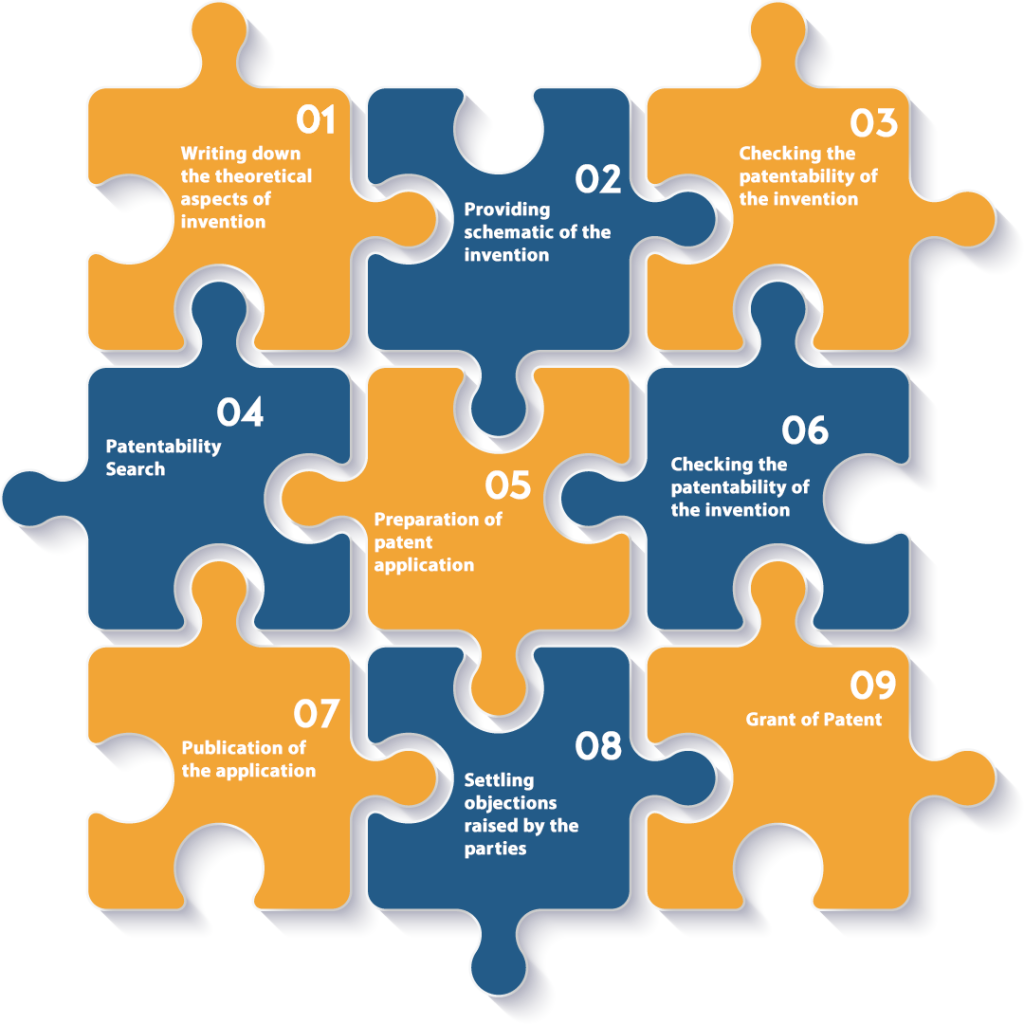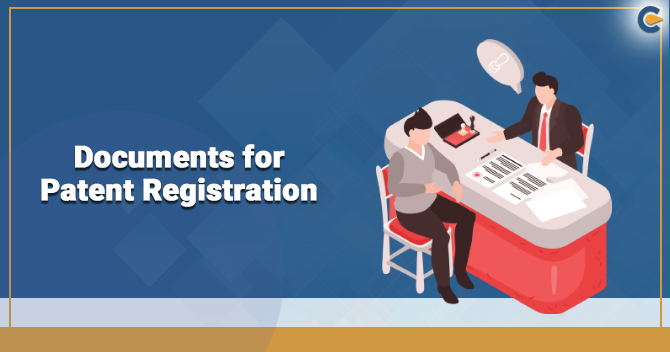A patent is an imperative part of the Intellectual Property Rights that renders exclusive rights to the owner to sue anyone who allegedly counterfeited the invention for monetary benefits. It originally refers to a legal document that proves that a certain invention is under Patent protection.
The term patent protection means that the invention cannot be used, distributed, or sold by others for commercial purposes. In this article, we will talk about the patent registration documents that one has to arrange during the process of patent registration. To get a patent, one has to apply to the patent office along with a long list of patent registration documents. It’s important for the applicants to meet all the compliances under the Patent Act to obtain the Patent certification.
Brief on the Patent Registration Documents
- Application form related to the grant of the patent in India.
- A copy of the complete specification of the patent and in case it is already furnished, it should be followed by the complete specification within 12 months.
- Technical drawing of the patent, if required.
- A duplicate copy of the document highlighting the theoretical brief of an invention along with relevant information.
- A duplicate copy manifesting the information related number, current status, and filing date of each overseas patent application (Form 3).
- The priority document as directed by the controller, if the priority date is already claimed in the convention application,
- Undertaking related to the inventorship in case of convention/PCT national phase application (Form 5) or if the provisional specification if duly followed by a complete specification.
- An original copy of Power of Attorney if the patent agent is handling the application requisites.
- Fees related to the patent registration to be paid via cash/DD/cheque.
Details to be Enclosed in the Patent Registration
While filing up the application for the patent, the applicant will come across the different of forms given below:-
Form 1: Application related to the Grant of Patent
This application entails:
- The name & address of the inventor(s),
- The name & address of the applicant(s),
- Information analogous relating to the current invention, which inventor has filed and few requested undertaking & other information.
Form 2: Provisional / Complete Specification
Form 2 deals with the specification of the inventor’s patent. It may be complete or provisional patent specs based on the type of patent application the inventor is dealing with.
Form 3: Statement & Undertaking under Section 8
Form 3 is used to enclose details related to the patent application filed in any other nation for the existing invention.
Form 5: Undertaking regarding the Inventor-ship
This application acts as a declaration form for the inventors of the existing patent for which the application is being filed.
Form 26: Power of Attorney (if filed via Patent Agent)
Form 26 is primarily used to assign a power of attorney related to the patent’s agent. He/she will be responsible for addressing the prerequisites of a patent application on behalf of the inventor.
Since rate of rejection of patent application is considerably higher, the applicant is required to remain spot-on with patent registration documents. Any loopholes might leads to instant cancellation and the applicant has to follow the whole process again.
Read our article:Patent in India: Registration and Filing Process
Procedure to be Followed for Registering the Patent in India


Step 1: Writing Down the Theoretical Aspects of the Invention
Collect the information regarding the invention such as:
- Area of invention
- Description highlighting the functionality aspect of the invention.
- Written document manifesting the operationality of the invention
- List of advantages rendered by the inventors.
If the inventor has contributed his/her time to the invention during the R&D phase, ideally, it must possess a lab record enclosing the inventor’s signature and date.
Step 2: Providing Schematic or Graphical Illustrations that Manifest the Working of the Invention in Brief
The drawings & diagrams must reflect the working of the inventor thoroughly. These adhere to absolute importance when it comes to filing the patent application.
Step 3: Checking the Patent ability of the Invention
According to the Indian Patent Act, every invention does not necessarily fall under the Patent regime as there are a few exceptions to it. The applicant must conduct an in-depth search regarding the patentability of the inventions prior to filing.
Step 4: Conducting Patent ability Search
The next step would be determining whether the invention comply with the patentability criteria as cited under the Indian Patent Act.
They are:
- Novelty
- Non-obviousness
- Enabling
- Industrial application
Step 5: Preparation of Patent Application
The applicant is eligible to file a provisional application if the invention is in the R&D phase. It renders the underneath advantages to the inventor:
- Safeguards the filing date
- An extended timeline of 12 months for filing the thorough specifications.
- The cost is considerably low.
Filing the provisional specification is not mandatory for the inventor. However, it does come in handy when it comes to securing the filing date or getting time relaxation when the invention is in the R&D phase.
Step 6: Publication of the Application
After furnishing the thorough specification and the patent application, the application will be published after 18 months of first filing.
In the event of the early publication, the application can be made at the patent office along with prescribed fees. Generally, the patent application is published within 30 days of early publication request.
Step 7: Request for Examination
The patent application is scrutinized after receiving the request for the same. The request is generally made in form 18, also known as a request for evidence (RFE). Upon receiving the request, the controller at the patent officer forwards the application to the patent examiner, who scrutinizes the application against criteria given above.
The examiner then prepares an initial examination report upon reviewing it for the aforementioned terms. This is known as Patent Prosecution. This report will then submit to the controller. The report generally encloses prior arts (existing patent registration documents prior filing date), similar to the claimed invention & same is reported to the applicant.
Step 8: Confronting the Objections
If any objection is raised soon or after the release of the examination report, the inventor will be given a fair chance to counter the objections in the manner as prescribed under the Indian Patent Act[1].
Step 9: Settling the Objections
As soon as the inventor succeeds in clearing the objection, the boards’ concerned members stamp their approval on the examination report.
Step 10: Grant of Patent
After meeting the patentability requirements, the application gets the approval of the concerned members, and the grant of patent is notified in the patent journal.
Conclusion
Patent registration is meant to be filed before the patent office annexed with complete & provisional specifications. The patent registration documents have been discussed in brief in this article. Connect with CorpBiz expert if you have some doubts regarding the same.
Read our article:Procedure for Registration of Patent Agent in India











